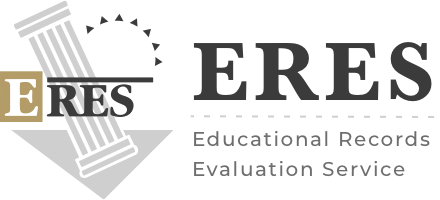Speech-language pathologists (SLPs) is a position that is highly in-demand across the United States, where there are abundant opportunities for domestically trained individuals as well as internationally educated professionals. Healthcare needs are transforming and the awareness of communication disorders arises, which is why certain states and practice settings are grappling with acute shortages.
Key Takeaway
Settings where high demands lie occurs at school systems, early intervention programs, healthcare facilities, and elder care settings. The SLPs’ salaries range from $60,000 to over $100,000 depending on the areas assigned. In fact, in other states where the shortage is higher, the compensation packages and incentive programs are also competitive. Understanding where these opportunities are open and of their offers can help SLPs’ to make informed decisions in their career growth and professional paths.
Understanding the SLP Shortage Landscape
The employment of speech- language pathologists, according to the Bureau of Labor Statistics, is projected to greatly increase in the coming years compared to the average of all occupations. Factors that drive this growth includes aging population who need rehabilitation services, screening for speech and language among young children, and the rise of awareness of communication needs for all life stages.
However, this demand is not the same across the country as rural areas and specific states have severe shortages, while other regions experience difficulty in filling in specialized positions. These high- demand areas open the most accessible entry point for internationally educated SLPs into the US health care system.
High- Demand States and Regions
Although the shortage is not similar among states, there are several that consistently reports critical demand of SLPs. This includes states like Texas, Arizona, Nevada, and Florida. Rural areas in the Midwest and Mountain West as well as rapidly growing Sun Belt states also express their need of SLPs as the population increases have outpaced the workforce development. Moreover, states such as Montana, Wyoming, and the Dakotas offer incentive programs for professionals in rural and far-flung communities.
Of course, the shortages are not only in rural states as it is even more in densely populated areas where specializations face recruitment challenges. As a result, it creates opportunities for qualified professionals who are willing to work in less conventional settings.
Career Settings with Strong Demand
School- Based Positions
One of the largest employers of SLPs are the public schools wherein many districts face critical shortages. SLPs who are assigned at schools work with preschool to high school students to address their challenges in speech sound disorders, language delays, fluency issues, and social communication.
School- based SLPs earn between $60,000 and $85,000 annually. Many schools offer positions with advantageous benefits, which includes health insurance, retirement plans, paid holidays, and summer breaks. There are also states with specific higher demand for school-based SLPs and provide signing bonuses, loan forgiveness programs, or housing assistance.
Early Intervention Programs
Another high-demand sector lies in the early intervention services for children from birth to age three. These programs aim to support children with development delays and disabilities in homes or community settings. Salaries for SLPs assigned in early intervention programs range from $65,000 to $90,000, depending on the state and agency. The flexibility and community- based setting of this sector appeals to many professionals along with the growing emphasis on early childhood development continues to increase its demand.
Healthcare and Rehabilitation Settings
Apart from the abovementioned settings, hospitals, rehabilitation centers, and skilled nursing facilities are in constant need of SLPs to work with the adult populations. These positions includes treating patients recovering from strokes, traumatic brain injuries, neurological conditions, and progressive diseases that affects their communication and swallowing activities.
The medical settings generally offer higher compensation compared with the other as salaries ranges from $75,000 to over $100,000 in many markets. Critical access hospitals and rural healthcare facilities often have difficulty to recruit SLPs so sometimes they offer premium salaries and comprehensive relocation packages.
Elder Care and Long-term Care
Facilities for long-term care, assisted living communities, and home health agencies increasingly continue to recognize that the SLP services remains valuable. The aging population in elder care settings created a substantial demand for SLPs. Patients in this environment are in need of SLPs who can help them address swallowing disorders, cognitive-communication deficits, and age-related communication changes. Salaries in this sector range from $70,000 to $95,000, with varied opportunities such as part-time, contract, or full-time arrangements.
Geographic Salary Variations
Apart from the several environments discussed where SLPs are there are different salary ranges, geographic locations also impact SLP compensations. Metropolitan areas in California, New York, and Massachusetts often report the highest absolute salaries, sometimes exceeding $100,000 annually.
Meanwhile, rural and underserved areas offer competitive base salaries with additional incentives such as student loan repayment assistance, relocation expenses, signing bonuses, or housing subsidies. For SLPs educated internationally, these incentive packages can substantially counterweight the costs associated with credential evaluation and licensure.
Licensure Requirements for International SLPs
Entering into the US workforce as internationally educated speech- language pathologists require endeavor in navigating credential evaluation and state licensure requirements. Each state requires particular requirements for foreign- educated professionals, which includes credential evaluation for educational equivalency.
Educational Records Evaluation Service (ERES) supports international SLPs by means of a process that provides comprehensive credential evaluation services. ERES is founded in 1981 and is an active member of the National Association of Credential Evaluation Services (NACES) since 1993. ERES specializes in evaluating foreign education credentials and determining their U.S. equivalency.
Furthermore, ERES serves as a link between international education and U.S. professional opportunities. They help internationally educated professionals access the growing opportunities in high-demand states and settings including SLPs and demonstrate that their foreign credentials meet the educational requirements for state licensure. Their evaluation reports are specifically designed for professional licensing boards and can be an essential component of the application process.
ERES is committed to provide reliable and recognized evaluations. For more information about credential evaluation services for speech-language pathology licensure.
Navigating Strategic Career Decisions
The current shortage for SLPs across the United States opens a wide opportunity in the job market for qualified professionals. With proper preparation and recognized credential evaluation, international professionals can access rewarding careers in settings desperately seeking their expertise.
The ongoing demand ensures that qualified SLPs, regardless of where they completed their education, will find meaningful opportunities to serve communities in need at the same time build a fulfilling career in this dynamic and indispensable profession.





